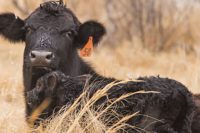The proper use of personal protective equipment (PPE) by meat and poultry processing plant workers is essential for safeguarding both the employees and products.
But getting people to follow usage procedures can be challenging. Factors such as discomfort, language barriers, and a lack of understanding of the importance of equipment puts workers at risk, analysts say.
It is vital for processors to evaluate employees and their tasks in order to identify the appropriate gear, says Jen Allen, vice president of operations and engineering for Allen Safety, an Orlando, Fla.-based global safety and process improvement company.
“Thoughtful and detailed risk and PPE job task assessment are key for determining proper PPE for employees,” Allen says, noting that the use of different types of PPE is not always better. “There are jobs when more PPE or inappropriately selected PPE can actually lead to increased risk of injury,” Allen says. Too much, bulky, or incorrectly sized PPE, for instance, can cause unnatural movements that put employees at risk for ergonomic stressors, particularly those performing repetitive motions, including working with knives during deboning or evisceration.
PPE options include aprons and gloves that are single-use or made for frequent sanitizing; protective footwear with steel toes, non-slip soles, and covers; full face guards; head-protection gear including hard hats and bump caps; and hairnets to cover head and facial hair, says Elaine Vanier, agriculture programs technical manager for NSF International, an Ann Arbor, Mich.-based food-safety auditing firm and standards developer.
It is extremely important, meanwhile, for operators to consider comfort and ergonomics when selecting PPE for workers in high-repetition jobs and areas with temperature extremes, Allen says.
Processors also should evaluate employee exposure to biological hazards such as blood and feces and diseases such as Campylobacter when performing job task risk analysis, she says. Processors also should pay attention to risks when workers change or adjust PPE throughout the day.
Risk-reduction options abound
Measures that can lower employee exposure to biological hazards include using proper wound coverings over broken skin; PPE that fits well, to eliminate continual adjustment; and eye, nose, and mouth protection in splash or spray areas, Allen says.
Processors can better ensure that plant workers properly use PPE by including the employees in the decision-making process, says Matt Spencer, director of human resources and safety programs for the Tucker, Ga.-based U.S. Poultry & Egg Association. He notes, for instance, that people are most likely to use PPE properly when they can test and recommend the equipment that has the best fit and comfort.
Employees who feel PPE is uncomfortable may ignore standard operating procedures, Vanier says. “This can include workers adjusting PPE such as face masks and shields when working, which can both increase the risk of infection to the workers as well as the risk of contamination to the product from microorganisms that may have been transferred to their hands during adjustments,” she says.
In addition, PPE wearers must take care to not contaminate themselves in the removal, disposal or decontamination of the equipment, Vanier says. “Workers should also be trained in proper sequencing and handling of the apparel,” she says.
Ensuring PPE is personalized with proper sizing and a focus on comfort goes “a long way in increasing the likelihood that employees will wear the equipment as designed,” Allen says. She adds, however, “nothing takes the place of continuous employee coaching in real-time in work areas to instill and maintain a culture where proper PPE use becomes second nature.”
PPE wearers must take care to not contaminate themselves in the removal, disposal or decontamination of the equipment.
How to overcome the language barrier
Effective instruction can be difficult if there are problems in communicating with immigrant workers in meat and poultry plants, analysts say. It is important for operators to educate employees in their native languages for greater understanding, Spencer says.
“Supervisors must monitor the comprehension of training and the constant communication with the workforce,” he says. “The development of non-language-based training focusing on crucial safety functions is helpful.”
Negligence by many processors in reviewing an employee’s full scope of responsibilities when analyzing PPE needs can further compromise worker safety, Allen says. “Current evaluations and assessments generally only evaluate one or two jobs that an employee does without considering less frequent jobs that may only be performed weekly or monthly,” she says, adding that operators also should consider the risks of each individual task when issuing PPE instead of just the job title.
Still, it can be difficult for operators to gauge the rate of compliance with PPE measures as some workers face physical limitations in using the PPE properly, Vanier says. Employees with certain health conditions, for instance, may be unable to wear face coverings as it can impede breathing, she says.
Because COVID-19 is still a threat to workers, it also is imperative for processors to distribute the pertinent PPE to better protect against the threat, analysts say.
“Single-use PPE, such as face masks and face shields, is one of the most effective types of PPE to reduce the risk of COVID-19 infection amongst workers,” Vanier says, adding that operators should ensure that enough PPE is always available, including replacements for used items.





Report Abusive Comment